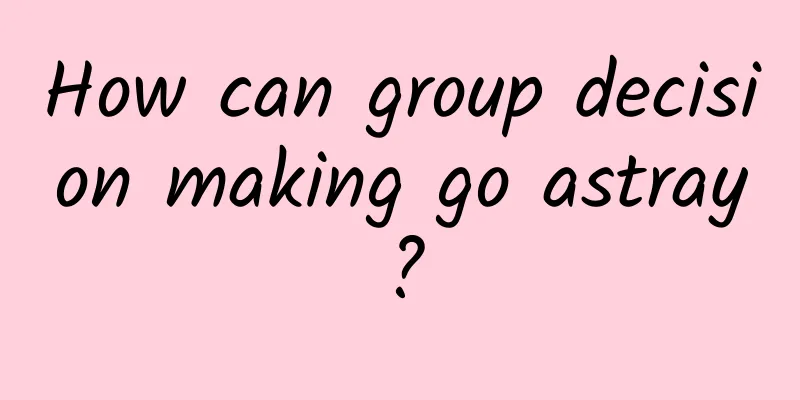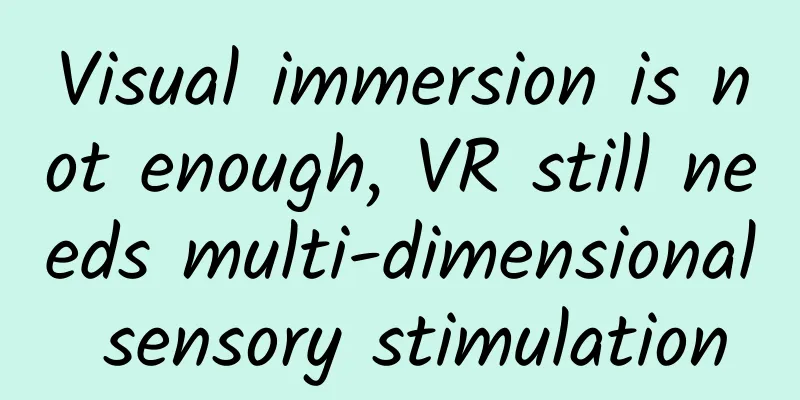How can group decision making go astray?

|
The Challenger space shuttle exploded shortly after takeoff in 1986. © Boing Boing Leviathan Press: As it happens, I just rewatched the movie 12 Angry Men (1957) recently. Among the 12 jurors in the movie, only one (1/11) initially questioned whether the suspect was "guilty", but as the plot progressed, the votes gradually reversed: 2/10➝3/9➝4/8➝6/6➝9/3➝8/4➝11/1…until 12/0. © Gifer Of course, as the article says, "groupthink can be a form of mental inertia, but not all mental inertia leads to groupthink." The overwhelming "guilt theory" in "12 Angry Men" at the beginning seems to be a manifestation of this mental inertia: one of them even changed his guilt theory at will in order to end the argument early and go home to watch the game. And it was the insistence of the minority (the architect played by Henry Fonda) on "reasonable doubt" that ultimately led to the reversal of the ending. However, in a general sense, "groupthink" refers to the decision-making process in which a group makes irrational decisions - a bit like the situation at the beginning of "12 Angry Men" - because individual members tend to make their own views consistent with the group, the entire group lacks different perspectives and is unable to conduct objective analysis (this also involves 8 preconditions that induce groupthink: high group cohesion, group isolation from external information and analysis, command-style leadership, lack of order in decision-making methods, similarity of group members' backgrounds and values, pressure from external threats and time constraints, etc.). This is really an extremely interesting phenomenon. How is the process of "group blindness" caused by "group wisdom and group efforts" achieved? In the 1970s, thanks to the pioneering research of psychologist Irving Janis, a phenomenon that has become not only well-known and self-explanatory, but also experienced by many people came to the fore. It is called “groupthink.” © Horst Faas/AP Janis has noticed the symptoms of groupthink in some of the failed group decisions he has studied. He has focused on White House failures, such as the Bay of Pigs invasion and the escalation of the Vietnam War, as well as the Challenger space shuttle disaster. Janis calls it "a collective decline in thinking efficiency, practicality, and moral judgment under group pressure." But at what point, exactly, does groupthink take over and destroy the decision-making process of a committee, a polity, or a society? How much independent thinking is needed to ensure that a group's deliberations are not wasted? And what role does reflecting on one's own position play in this? A recent paper published by Vicky Chuqiao Yang and colleagues in the Proceedings of the National Academy of Sciences (PNAS) discussed these issues in depth. (www.pnas.org/content/118/35/e2106292118) Applied mathematician Yang Chuqiao. © SIAM Young is an applied mathematician who studies human group behavior at the Santa Fe Institute, a group of academics whose main purpose is to advance complexity science. To explore how group decisions can swing to the worse side of a two-option swing, Young's team built a simple model with two types of learners: individual and social. Individual learners think for themselves, while social learners seek input from others. Young says social learners are the “big guys” in social systems because many of the crises facing humanity — like climate change and pandemics — require collective thinking and action. Social learners are potential assets to lean on: “The key question about group decision-making is whether a social system can produce the best outcomes when some of its members weigh the choices of others rather than their own.” Social learners aren't the problem here: Individual learners who are stubborn and unwilling to change their minds are the source of trouble. © Verywell Mind Yang’s model starts with individual or social learners, all of whom randomly prefer one of two choices. Suppose you and your 19 friends want to decide which movie to watch next weekend: Spider Sheep 4 or The XI (to be clear, these names are all my own, not Yang’s). Before everyone reads the reviews, the group is 50-50 about each movie. However, 80% of the online reviews say Spider Sheep 4 has a better plot, better acting (especially the sheep), and more stunning visuals. Over time, the individual learners among your friends made their final decisions based on their own judgment, while the social learners, on the other hand, learned the results from the rest of the group. So, what is the probability that the majority of the group will choose the higher-rated movie - or, as Young puts it, "the option with the higher merit"? The researchers also tried several different variables: changes in the ratio of social to individual learners within the group, the proportion of individual learners who ultimately chose Spider Sheep over Star Wars, and the strength of herd behavior among friends. The last factor depends on the different behaviors of social learners. In some groups of the study, they observed low-intensity conformity, which means that social learners will only change their choices when there is an overwhelming opinion from others in the group. Researchers describe this behavior as "informational conformity" because social learners wait for the group to reach an informed judgment. If some of your friends love movies but are too busy with work to read reviews, they may be informational conformists. Other studies have also observed high levels of in-group conformity, meaning that social learners are more easily swayed by the prevailing opinion. This susceptibility to influence is called “normative conformity” because social learners seem to care more about in-group harmony than making informed decisions. Let's assume that 10 of your friends are individual learners and 10 are information conformists; and 8 of the 10 individual learners will eventually decide to watch Spider Sheep. This means that, according to Yang's analysis, the majority of the remaining people in the group will also choose to watch Spider Sheep, even though the initial vote is more likely to be closer to 50-50 than 80-20. In fact, the above results still hold even if the uninformed opinion in the group initially favors The Great War. On the other hand, if the social learners in the group are all easy-going slackers who just want to get along with their friends, the group's behavior will become more unpredictable. Yang's team showed that if the proportion of conformists is above a certain threshold, the group will become bistable: the final decision depends on the uninformed initial opinion and who changes their mind and when. Perhaps if 45% of the group initially prefers Spider Sheep, it will win, but if only 40% agree, then the winner will be Sing Sing. Or maybe Sing Sing's lead will convince enough social learners to eventually leave Spider Sheep in the dust (no matter how well the sheep performs). It becomes extremely difficult or even impossible to predict the outcome. The content of the information people send is more important than whether specific people receive specific information. The balance between the conformists' desire to "see a good movie" and "everyone gets along well", and the balance of opinions among individual learners, determines the number of social learners needed to make the bistable system unpredictable. If the number of informational conformists and normative conformists is evenly distributed among social learners, the team's expected results will point to Spider Sheep - unless almost all learners are social. And the closer the social learner is to the "peacemaker" type, the less people are needed to tilt it towards unpredictable chaos. © Anti Corporate Social Responsibility In real life, no one is a completely "individual" or "social" learner. We are almost all a little bit of both. And the people around us don't have the same influence on us. In addition, sometimes we ourselves can't even explain why we favor one over the other. And the change of mind may just be a whim. To recreate these real-life scenarios, Yang and her colleagues used three slightly more complex versions of the model. These models behaved very similarly to the simpler versions, with one exception: If the chance of an individual randomly changing their mind was relatively high, say 50% or more, the noise would overwhelm the signal. Eventually the group would split evenly and no longer be able to reach consensus. Young’s team tried another variation on the model. They made one of the options “stickier” than the other, meaning that individual learners who favored that option would have a harder time changing their minds and would be blind to other learning effects. Psychologist Adam Grant, in his book Think Again, calls this “getting stuck on idiot mountain.” “The most important and only motivation for the success of [election] forecasters,” he writes, “is how frequently they update their beliefs.” For example, your group might be a die-hard fan of The Last Airbender (and even a fan of The Last Airbender), while the other group has watched every movie ever made and has no intention of stopping. If the higher-rated movie (in this case, Spider-Sheep) is also stickier, then the model will behave the same way as before. However, if The Last Airbender XI is stickier, then the results will be completely reversed. If the proportion of social learners is low, The Last Airbender will eventually prevail - despite the lower rating. As the proportion of social learners increases, a bistable situation will emerge. Note that social learners are not the problem here: individual learners who are stubborn and unwilling to change their minds are the source of trouble. If these results—currently just mathematical computer simulations—match up with real life, what does that mean? Many have speculated that changes to social media, such as breaking up echo chambers and ensuring that users see content from people with opposing views, would promote democratization. However, the results obtained in the model in which all social learners can be influenced by others are no different from those obtained in the model in which the learners are restricted to communication. The content of the messages people send is more important than the specific people who receive specific messages. The key group of people, whichever organization you have in mind, needs to self-assess based on the evidence, but also needs to be flexible about that assessment. That’s because, as Young and her colleagues found, “if a group of individual learners never change their minds based on new evidence, the choices they make can ripple through the social network.” What’s more, for better or worse, this means that “persistent minorities can have a significant impact on the outcome of democratic votes.” Groupthink can be a form of intellectual laziness, but not all intellectual laziness leads to groupthink, and not all social learners are intellectually lazy. Yang's team showed that informational conformity can be an effective strategy for dealing with ill-prepared decisions, and that even normative conformity can be effective in moderation. The real problem is those in-group members who are unwilling or unable to reconsider their opinions even when new information comes in. Young’s research shows how a lack of iterative thinking can ruin not only the success of individuals but also the success of entire groups. “The symptoms of groupthink,” Janis observes, “emerge when members of a decision-making group begin to discount the opinions of their leaders or colleagues.” Successful groups encourage a culture that, as Grant puts it, “embraces the joy of being wrong” and embraces second thoughts. By Joshua Holden Translated by Ishmael Proofreading/Rabbit's Light Footsteps Original article/nautil.us/what-makes-group-decisions-go-wrong-and-right-13408/ This article is based on the Creative Commons License (BY-NC) and is published by Ishmael on Leviathan The article only reflects the author's views and does not necessarily represent the position of Leviathan |
<<: Baldness treatment upgraded: With the help of gene editing, hairless mice grow human hair!
>>: Why is Yuzuru Hanyu so fairy? Half of his clothes are feathers
Recommend
How to use internal links to improve website inclusion?
Improving website authority can increase external...
How to earn 3,000 yuan a month by doing Pinduoduo for 2 hours a day
How to earn 3,000 yuan a month by doing Pinduoduo...
Will your brain become swollen if you watch short videos frequently? The impact on your body and mind may be far beyond your imagination
I won't even watch a two-hour movie. A short ...
The conversion rate of bidding promotion is poor. Is it related to the landing page?
In order to test the waters, most partners simply...
There are 6 ways to create a brand story that will spark discussion
New Balance tells a story about Li Zongsheng'...
NIO submits prospectus, Li Bin donates one-third of shares to establish a trust fund
On August 14, NIO submitted its F-1 prospectus to...
Fuwei SEO system training video course (trainees’ after-class review video)
Chapter 1: Introduction 1.1: Introduction: Practi...
2018 Short Video App Distribution Insight Report!
The 2018 mobile Internet's annual "newco...
Will brain-like artificial intelligence become the "new favorite" of the next generation of AI?
How do high-tech robots reflect the "high&qu...
What is the truth behind the popularity of the APP "Catch Dolls Everyday"?
Recently, I often see advertisements for the Tian...
iOS 15 reveals new features, combined with iPhone 13, netizens say it's too powerful
The official version of iOS15 will be released at...
After 3 years of iOS development, he only needed 5 minutes to convince the interviewer
Preface The one who borrows the carriage and hors...
How to do Christmas marketing? Here are 3 ways and 10 cases
“Double 12” has just passed, and Christmas is com...
Four marketing techniques for jewelry industry on Xiaohongshu
Some time ago, a friend of mine on Xiaohongshu to...









